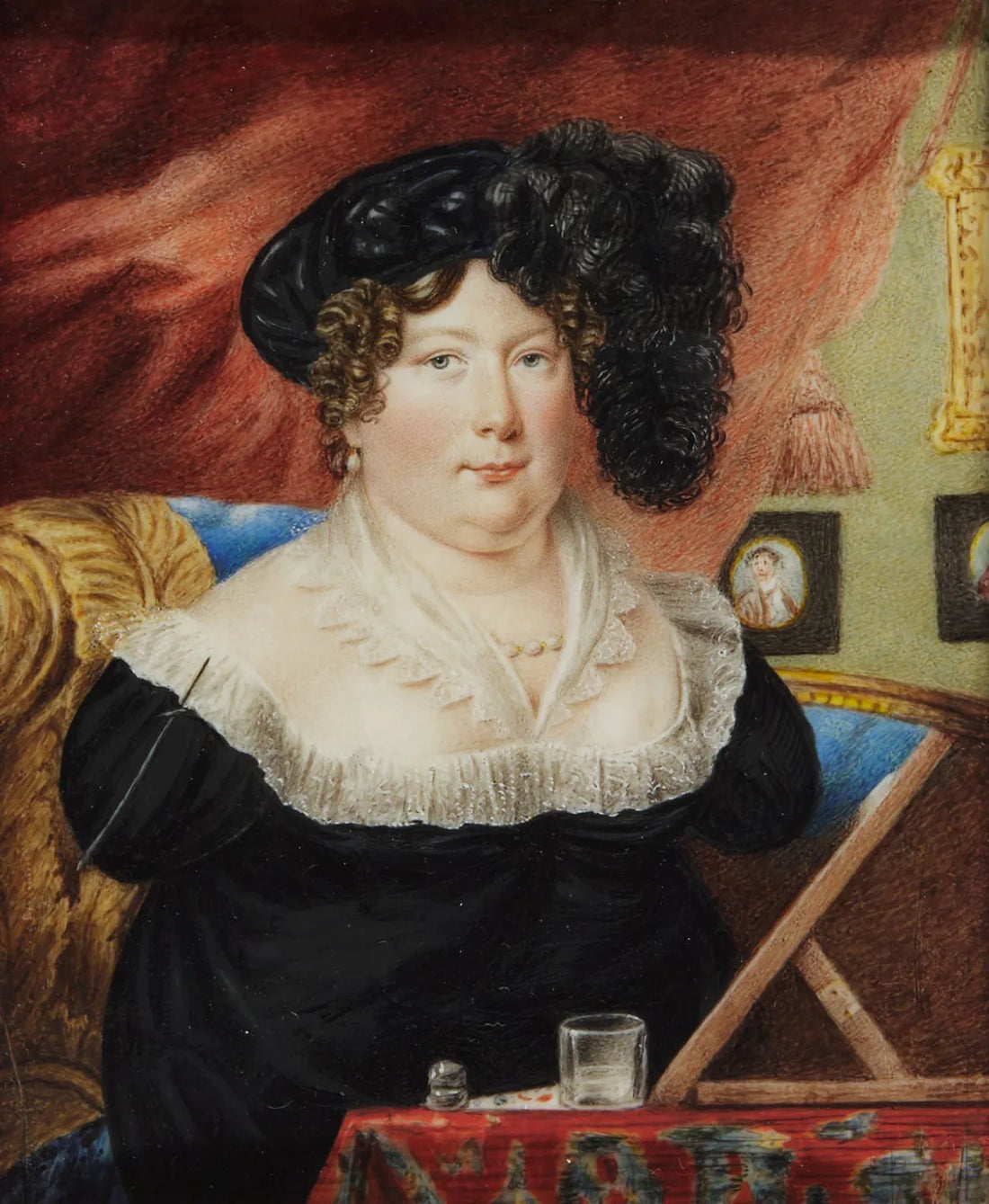July marks 33 years since the Americans with Disabilities Act was passed, which prohibited discrimination against individuals with disabilities in all aspects of public life. In the UK, similar legislation, the Disability Discrimination Act, was passed in 1995. Today, July is remembered as a month to celebrate the achievements and identities of people with disabilities across the globe. In the art world, artists with disabilities often go unnoticed, their achievements overshadowed by a lifetime of hardship and discrimination. One particular 19th-century artist’s work was posthumously exhibited over 170 years after her death. This is the story of Sarah Biffin, an artist who did not let her disability define her. Her story highlights the achievements of disabled peoples when there was little to no equitable assistance and compassion.
Sarah Biffin was born into a small agricultural community in Somerset, a region in southwest England. Baptism records revealed she was born without arms or legs due to the congenital condition of phocomelia. As a member of a poorer family, Sarah felt pressured to lessen the burden on her parents. She taught herself to write, sew her own dresses, draw, and paint using her mouth. Biffin’s handwriting and artistic skills were indistinguishable from the work of a non-disabled person.

At age 13, Biffin was taken in by Emmanuel Dukes, a traveling showman. With her parents’ permission, Biffin was exhibited in fairgrounds and sideshows throughout England as one of the greatest wonders of the world, a miniature artist born without hands and arms. Attendees paid admission fees to experience Biffin’s work in person, paying for her paintings that were signed “Painted without hands by Sarah Biffin.” Biffin’s annual salary was around £5.
In her early 20s, Biffin reached a pivotal point in her career. At St. Bartholomew’s Fair in 1808, Biffin caught the attention of George Douglas, the Earl of Morton. The Earl was fascinated by Biffin’s talent and commissioned a portrait from her, and, once he was sure of no deceitfulness, arranged for her to receive lessons in miniature portraiture from William Craig. Craig, a painter for the Royal Academy of Arts, suited her technique and expanded her skills. After mastering her watercolor technique, the Earl presented Biffin’s work before King George III, and he appointed her as his second daughter, Princess Augusta Sophia’s miniature painter.
From there, the royal family commissioned many portraits from Biffin. She was awarded a medal in 1821 from the Society of Arts and her paintings were accepted into the Royal Academy. The legendary Victorian writer Charles Dickens mentioned Sarah Biffin in three of his novels. She even wrote her own autobiography in which she stated her desire for autonomy. In it, she wrote, “I do not regret my situation, I thank God that he has been pleased to make me as I am, nor do I envy the enjoyment of others.” Her self-portrait from this time in her life presents the artist as a confident and proud woman, surrounded by her works and the tools of her trade.


Sarah Biffin’s ambition did not end when the Earl died in 1827. Queen Victoria awarded her a Civil List Pension. She moved to Liverpool, where she married a bank clerk, William Wright. Under her husband’s last name, She began advertising her work in publications and set up a studio to work on her art full-time, renewing her artistic career as Mrs. Wright. One of her final letters revealed that she was planning for a pivotal chapter in her career—a visit to America where she would host workshops and meet with artists of similar physical challenges. Sadly, her health deteriorated, and she had little money to achieve this goal. She died in 1850 at the age of 66.
Sarah Biffin was at the intersection of two opposite worlds: the fairgrounds and the royal court. She forged her way as an independent artist during a time when women, especially those with disabilities, were rarely given opportunities for professional success. She became a luminary in her profession despite her numerous challenges. In 2022, Philip Mould & Company, a gallery in London, exhibited the works of Sarah Biffin for the first time in over a century. Historians gathered to separate the fictionalized Biffin from the reality of her life presented in primary source documents.
For contemporary artists with similar disabilities, such as Alison Lapper, this exhibit’s opening was perfect timing. Upon being presented with Biffin’s collection, Lapper stated, “Why does my disability somehow define who I am? And I don’t think that it defined her [Bifffin]. She knew exactly how to get what she wanted, what she needed. You know, you’ve got to have that determination, that grit… In my mind, she’s quite phenomenal.” Lapper, like Biffin, was born with phocomelia. She was the subject of a nude sculpture in London’s Trafalgar Square. Lapper and Biffin are paragons of confidence. Along with other artists with disabilities, they are shining examples that the future of art is diverse and accessible.
©ArtRKL™️ LLC 2021-2023. All rights reserved. This material may not be published, broadcast, rewritten or redistributed. ArtRKL™️ and its underscore design indicate trademarks of ArtRKL™️ LLC and its subsidiaries.





